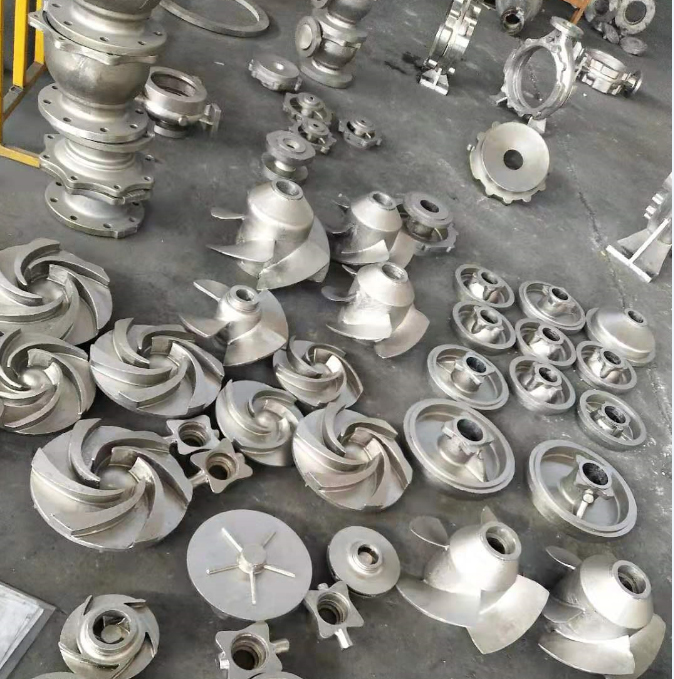The Titanium casting process includes graphite mold casting and titanium investment casting. Graphite mold casting is the main molding process for producing civilian titanium castings.
Titanium Investment casting is the main process for producing aviation titanium alloy castings with high precision, complex shape, smooth surface, and dense interior.
The most widely used titanium material is Ti-6A1-4V alloy. It has good casting performance and stable structural properties. Compared with wrought alloys of the same composition, the strength of cast titanium alloys is basically the same, but their plasticity and fatigue properties are about 40%~50% lower, while the Fracture toughness is slightly better.
Titanium material castings generally adopt stabilization annealing treatment, and the solid solution treatment and hydrogenation treatment in research can refine grains, improve microstructure, and improve alloy fatigue performance to the level of forgings. Hot isostatic pressing is a common treatment method for high-quality titanium castings.

Titanium material castings are mainly used in the aerospace industry. Important components used include: engine compressor casing, intermediate casing, blades, hollow guide, inner ring, supercharger impeller, bearing housing and support, aircraft bracket, umbrella compartment, ear piece, short beam, flap slide rail, brake housing; Missile control cabin, tail wing, rocket rear head, common bottom, etc; Supports, scanner frames, mirror tubes, etc. for artificial satellites. Widely used in the manufacturing of corrosion-resistant pump bodies, valves, and impellers in civil industry; Spiral propellers for ships; The shell, bracket, and cylinder of precision machinery; Medical artificial joints, prosthetic limb components; Golf head, harness, bicycle parts, etc. for sports equipment.
Strength and Lightweight: Titanium is as strong as most common steels, yet it weighs less than 40% of its counterparts. This combination of strength and lightness makes it ideal for applications where weight is a critical factor.
Corrosion Resistance: Titanium is almost as resistant to chemical attack as platinum, making it one of the best candidates for components that handle seawater and chemicals. This resistance extends the lifespan of the products and reduces maintenance costs.
Cosmetic Appeal: Beyond its technical advantages, titanium also has a cosmetic appeal that outperforms even precious metals. Its lustrous, silver color and resistance to tarnish make it a popular choice in the consumer marketplace, particularly for jewelry and high-end consumer goods.
